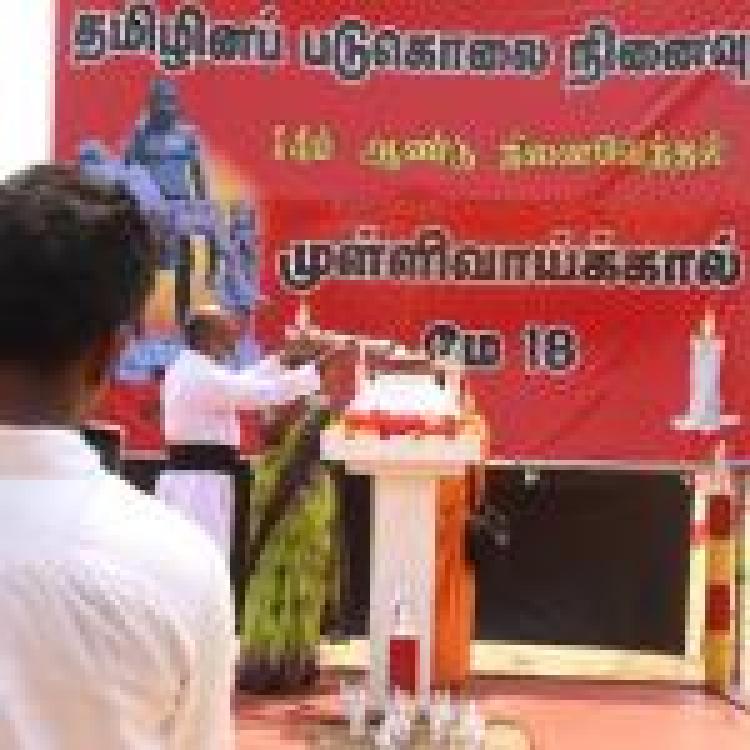.jpg)
A Training Centre for the National Cadet Corps has been established in Nandikadal, Mullaitivu this week as Sri Lanka’s continues to occupy the Tamil homeland.
Sri Lanka’s State Minister of Defence Premitha Bandara Tennakoon, who attended the opening as a chief guest, claimed that the new training centre will “build unity and harmony” between the North-East and the South of the island.
.jpg)
He said that cadets who acquire the fundamentals of life in this facility will become “a precious human resource and patriotic citizen with an attractive personality and balanced thinking.”
The training centre has been set up in Nandikadal, a town where tens of thousands of Tamils were massacred by Sri Lanka's military in their genocidal offensive in the final months of the armed conflict in 2009. Sri Lanka's military are responsible for a litany of human rights abuses during the final phase of the armed conflict, including the shelling of hospitals, extrajudical killings, widespread sexual violence, torture and enforced disappearances.
To date, Sri Lanka's military have not been held accountable for their crimes. Instead, the military continue to occupy vast swathes of land and have entrenched their presence in the North-East even though 15 years have passed since the end of the armed conflict.
While the military has a large presence across the homeland, it has an inflated presence in Mullaitivu, where the last phase of the armed conflict was fought.
.jpg)
The military remains extensively involved in civilian life in the region, making regular appearances at schools, places of worship and other community events.
Despite repeated calls for the Tamil homeland to be demiltiarised and the military to leave, the armed forces continue to maintain an overwhelmingly large presence. A 2017 report by PEARL and the Jaffna-based Adayaalam Centre for Police Research, which focussed on the extent of militarisation in Mullaitivu, found that there was as many as one soldier for every two civilians in the district.




